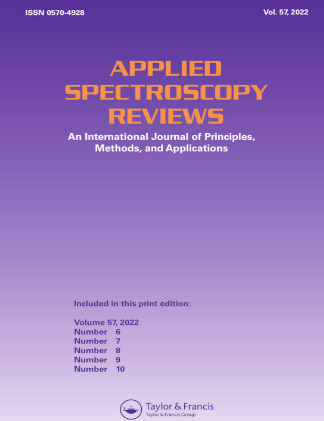Excited state intramolecular proton transfer dual emission Schiff bases for metal detection and cell imaging
IF 5.4
2区 化学
Q1 INSTRUMENTS & INSTRUMENTATION
引用次数: 0
Abstract
AbstractFluorescent probes incorporating the excited-state intramolecular proton transfer (ESIPT) phenomenon have emerged as versatile tools in scientific research. These probes exhibit dual emission, resulting from the unique transfer of a proton within the molecule upon excitation. This property makes ESIPT-based Schiff bases highly attractive for metal detection, cell imaging, and sensing biologically important molecules. In metal detection, the spectral changes of ESIPT-based Schiff bases upon interaction with metal ions enable the development of sensitive and selective sensors. For cell imaging, their photophysical properties make them ideal for labeling cellular components and facilitating multicolor imaging. In sensing biomolecules, ESIPT-based Schiff bases offer selective detection of interactions and enzymatic activities. Integration of these probes holds great promise for applications in environmental monitoring, biomedical research, and healthcare. This review focuses on the photoluminescent properties and application of ESIPT dual emission Schiff bases for sensing of metal ions, biologically relevant molecules and cell imaging.Keywords: Fluorescent probesdual emissionSchiff baseenvironmental monitoringcell imaging AcknowledgmentsThe authors are thankful to the Center for Research, CHRIST (Deemed to be University), for the research support and facilities.Disclosure statementNo potential conflict of interest was reported by the authors.激发态分子内质子转移双发射希夫碱用于金属探测和细胞成像
摘要结合激发态分子内质子转移(ESIPT)现象的荧光探针已成为科学研究中的多功能工具。这些探针表现出双重发射,这是由激发后分子内质子的独特转移引起的。这一特性使得基于esipt的希夫碱基在金属探测、细胞成像和传感生物重要分子方面具有很高的吸引力。在金属探测中,基于esipt的希夫碱基与金属离子相互作用的光谱变化使得敏感和选择性传感器的发展成为可能。对于细胞成像,它们的光物理性质使它们成为标记细胞成分和促进多色成像的理想选择。在传感生物分子方面,基于esipt的希夫碱基提供了相互作用和酶活性的选择性检测。这些探针的集成在环境监测、生物医学研究和医疗保健方面的应用具有很大的前景。本文综述了ESIPT双发射希夫碱的光致发光特性及其在金属离子传感、生物相关分子传感和细胞成像等方面的应用。关键词:荧光探针发射希夫基环境监测细胞成像致谢作者感谢基督大学研究中心为研究提供的支持和设备。披露声明作者未报告潜在的利益冲突。
本文章由计算机程序翻译,如有差异,请以英文原文为准。
求助全文
约1分钟内获得全文
求助全文
来源期刊

Applied Spectroscopy Reviews
工程技术-光谱学
CiteScore
13.80
自引率
1.60%
发文量
23
审稿时长
1 months
期刊介绍:
Applied Spectroscopy Reviews provides the latest information on the principles, methods, and applications of all the diverse branches of spectroscopy, from X-ray, infrared, Raman, atomic absorption, and ESR to microwave, mass, NQR, NMR, and ICP. This international, single-source journal presents discussions that relate physical concepts to chemical applications for chemists, physicists, and other scientists using spectroscopic techniques.
 求助内容:
求助内容: 应助结果提醒方式:
应助结果提醒方式:


